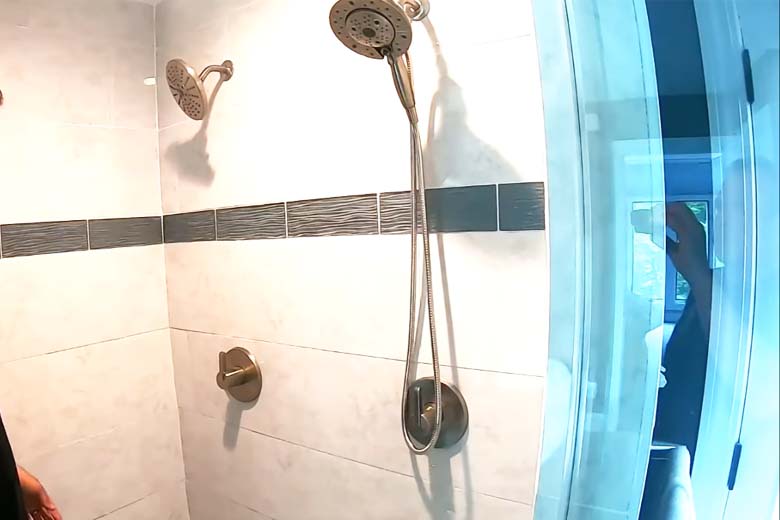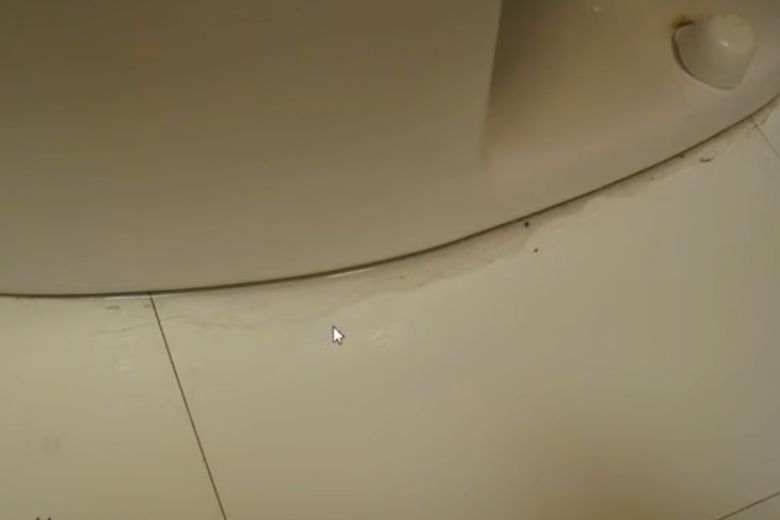A hot shower helps us refresh ourselves after a long and tiring day. Also, it is crucial during cold days. And for that, you need hot water in your shower or bathtub. So, it can quickly scare you when you see the bathtub or shower not getting hot water.
There’re multiple reasons for the tub and shower without hot water. The water heater may malfunction, faulty shower mixing valve, and inappropriate settings for the anti-scalding properties. Also, defective shower and tub faucets and leaks in a hot water pipe can result in only cold water in the shower.
So, you need to examine the entire hot water plumbing system to find the actual reason. Then, follow our tips to solve it and start receiving hot water again.
Why Is My Shower Water Not Getting Hot?
When your shower does not get hot water, it’s genuinely terrifying. The thought of having to bathe in cold water scares many people. So, as soon as you stop getting hot water in the shower, it’s time you inspect the reasons.
1. Defective water heater:
A damaged or flawed water heater is the primary reason for the bathtub and shower not getting hot water. The water heater might go wrong for different reasons. It may have gone too old, or the thermostat setting is incorrect.
A few of the reasons for water heater failing to heat water are:
- The water heater has gone beyond its lifespan. Usually, these devices can run for 8 to 10 years. As it grows old, the device won’t heat the water appropriately.
- The thermostat setting can be wrong. Also, the thermostat sensor may stop working. So, you have to inspect it.
- Sediment development inside the appliance will also fail to heat the water. The bottom of the water heater will accumulate sediments. So, the water won’t heat up properly and won’t go to the shower.
2. Inaccurate anti-scald settings:
The anti-scald sensor regulates the hot water flow to the bathtub and shower. It keeps the water flow limited to stop scalding your skin. Sometimes, the settings for the anti-scald device might change, even if you don’t know.
So, it will stop the hot water supply entirely. Conversely, the right setting might need to be revised to avoid delimiting the hot water. It will then deliver too hot water to the shower. Excessive heat can burn your skin. So, either way, the wrong setting for the anti-scald device is dangerous for you.
3. Faulty shower mixing valve:
The shower mixing valve will mix the hot and cold water to maintain the right temperature. So, you will get a perfect water temperature for a relaxing bath. The shower mixing valve is widely seen in old homes with older plumbing systems.
As the mixing valve goes wrong, it fails to mix the hot and cold water. It may also develop residues and grow too old to operate correctly. Whatever may be the reason, a defective shower mixing valve will stop hot water flow in the shower and tub.
However, the problem is seen mainly in old homes. You won’t find it in new homes as their plumbing system won’t have the mixing valve.
4. Leaks and blocks in hot water supply line:
The water heater will supply the heated water through a specific water supply line. The hearted water comes to the shower and bathtub through it. When the supply line leaks, the hot water will pour out.
Conversely, the hot water supply line may get clogged too. So, the shower won’t have any hot water for your bath.
The water supply line may leak for different reasons. It includes:
- It may have gotten too old and started leaking.
- Possibly, sediment development has clogged the pipe interior.
- Even there can be plumbing crossover of the hot and cold water supplies.
Hence, you have to scrutinize the supply lines. Depending on the reasons for leaks or clogs, you must work cautiously to fix them.
5. A faulty faucet:
Sometimes the hot water faucet in your shower may be damaged. Many old homes will have separate faucets for cold and hot water. As it happens, the faucet controlling the hot water might get damaged and stop working. So, you won’t receive hot water.
The faucet will malfunction for various reasons. These are:
- Sediment development in the cartridge
- Damaged cartridge and pressure valve
- The faucet handle may not turn properly
Depending on the problem, there will be multiple solutions to them.
How to Fix No Hot Water in Bathtub
As you understand the reasons for hot water not running in the shower and bathtub, it’s time to fix it. Of course, knowing why my bathtub is not getting hot water will help you with the solutions. So, let’s jump into the troubleshoots.
Fix the water heater:
If the route to the tub not having hot water is a problematic water heater, fix it. First, turn off the supply lines and allow the water heater to cool down properly. Then, remove the electrical outlet and inspect the thermostat setting. If it is incorrect, you must set the thermostat accurately.
Also, look for any leaks and sediment development at its bottom. If you find residues at the water heater bottom, remove them. You will need a sponge to wipe out the sediment. Alternatively, run a garden hose with high-pressure water to clean the tank’s bottom.
If there’s any leak, use Teflon tape to fix minor leaks. For larger leaks, you must call a professional.
Ensure anti-scald is working correctly:
First, look if your shower and bathtub system has an anti-scald device. If the shower has an anti-scald device, you must check it.
- Look at the faucet head and pry it off with a screwdriver.
- The anti-scald device will look like a rotating plastic stopper.
- First, pull it and rotate it clockwise. It increases the hot water flow.
- Finally, push and lock the anti-scald device in its position.
Fix the defective water faucet:
If the water faucet is old, it might need replacement. Also, it might have a broken washer that needs replacement. Moreover, the cartridge may get clogged or damaged. It would help if you scrutinized the reason for fixing it.
You must use a flathead screwdriver to pry off the cover and access the cartridge inside. If it is clogged due to residual development, use a brush and high-pressure water to unclog it. Also, check the screws and replace them if needed.
Replacing the fault mixing valve:
Sometimes, the water mixing valve will get damaged and need replacement. Usually, these mixing valves will be repaired. So, once they get damaged, you should replace the entire cold and hot water mixing valve.
Usually, these valves will cost anywhere between $50 to $100. Also, replace the plumbing system for older homes to eliminate the mixtures forever.
Remove sediment buildup in the shower faucet:
Most times, the shower faucet will have sediment development that stops the hot water flow. Its process includes:
- Access the valve by unscrewing the faucet retaining nut. For a few models, you need to pull the pin. Also, pry off the faucet cap to access the screws or pins.
- Hold the valve with the pliers set and slide it out from the faucet. Often, sediment development will stick the valve with the cartridge. So, you will need brute force to pull up the valve.
- Use white vinegar to submerge the cartridge. The sediments will soften, and you can brush them off quickly.
- It would help if you also cleaned the valve seat. First, remove the residues with a screwdriver. Then, apply white vinegar and brush off the sediments from it.
Stops leaks and crossover of the hot and cold water lines:
If the hot water has stopped coming in the shower due to leaks, try fixing it. Plumbing tape will be helpful in small holes causing leaks. You may need to replace the pipe if the leaks are due to larger damages. Hence, calling a professional will be valuable.
However, for the crossover plumbing system, you can fix it at home. You can lower the cold water pressure so that hot water can flow freely through the water pipes. Nonetheless, you should hire a professional to segregate the cold and hot water supply lines for a permanent solution.
Tips on Using Shower with Hot Water:
Sometimes, the bathtub and shower may not receive hot water for other reasons. So, you should follow the tips to avoid such conditions.
- Ensure that you connect only a few home appliances to the water heater. The shower will only get hot water if the devices need more water than the heater can accommodate.
- If the water needs to be adequately heated, increase the thermostat setting. It will increase water to the optimum level.
- For more demands of hot water, use a larger water heater. Often, it will solve the problem of bathtubs needing hot water sooner.
As you see, bathtubs and showers may only get hot water for a few reasons. If the problem persists, you should hire a professional and fix it ASAP. Or else, you might use a smaller heating device only for your bathtub.
Paul Newman is a blogger who writes about plumbing and home improvement. Over the past 20 years, I have worked as a plumber. My passion is to share my knowledge and experience with others to improve their homes.




